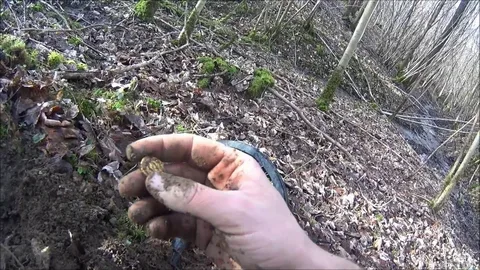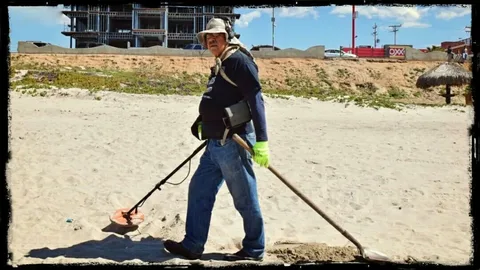Big mining operations have long been a topic of controversy and concern due to their significant impact on the environment. From deforestation and habitat destruction to water pollution and air contamination, the environmental consequences of big mining are vast and far-reaching. In this article, we will delve into the various ways in which big mining operations affect the environment and explore potential solutions to mitigate their harmful effects.
Big mining operations have a significant impact on the environment, including deforestation, habitat destruction, water and air pollution, and the release of greenhouse gases. These activities can lead to the displacement of local communities, loss of biodiversity, and long-term environmental degradation. It is crucial to uncover and understand the full extent of these impacts in order to implement effective mitigation and conservation strategies. This includes conducting comprehensive environmental assessments, monitoring the environmental effects of mining activities, and promoting sustainable practices that minimize harm to the environment. Additionally, public awareness and advocacy play a key role in holding mining companies accountable and promoting responsible environmental stewardship.
The Impacts of Big Mining on Local Communities

Big mining companies can have significant impacts on local communities, both positive and negative. On one hand, they can provide employment opportunities, infrastructure development, and economic growth. However, on the other hand, they can also lead to environmental degradation, displacement of local populations, and exploitation of natural resources. The extraction of mineral resources can also lead to contamination of water sources and air pollution, both of which can have serious health impacts on local residents. Additionally, big mining operations can disrupt traditional land use practices and cultural traditions of indigenous communities. It is important for mining companies to work closely with local communities and ensure that their operations are conducted in a socially and environmentally responsible manner. This often involves meaningful consultation with affected communities, fair compensation for any damages incurred, and sustainable development initiatives aimed at benefiting the local population in the long term.
The Environmental Consequences of Big Mining Operations

Big mining operations have significant environmental consequences, including deforestation, habitat destruction, air and water pollution, and soil erosion. Deforestation occurs as large areas of land are cleared to make way for mines and to build infrastructure, disrupting ecosystems and harming wildlife. Habitat destruction occurs as mining activities displace and fragment animal and plant populations, leading to loss of biodiversity. Air and water pollution are also common outcomes of big mining operations, as toxic chemicals and heavy metals are released into the air and waterways, contaminating the environment and posing health risks to humans and wildlife. Additionally, soil erosion can occur due to the disturbance of land and vegetation, leading to long-term degradation of the soil and loss of fertile land for agriculture. Overall, the environmental consequences of big mining operations are extensive and can have lasting impacts on ecosystems and communities.
Challenges and Opportunities in Big Mining Projects

Challenges in big mining projects include environmental regulations, community opposition, and access to capital. Environmental regulations can be strict and may require companies to invest in advanced technology and procedures to comply with standards. Community opposition can arise due to environmental concerns, displacement of residents, and the impact on local infrastructure. Access to capital can be difficult due to the high costs of establishing and operating a mining project, especially in remote locations.
Opportunities in big mining projects include the potential for significant returns on investment, job creation, and economic growth in the area. Once a project is established, it can provide employment opportunities for local residents and stimulate economic development in the surrounding communities. Additionally, the demand for minerals and metals in various industries presents an opportunity for companies to profit from their mining operations. Overall, big mining projects have the potential to contribute to economic development and provide essential resources for various industries.
The Role of Technology in Big Mining Industry

Technology has played a crucial role in the mining industry, allowing for increased efficiency, safety, and environmental sustainability. Advanced equipment and software systems have been developed to optimize mining operations and increase productivity. For example, automation and remote-controlled machinery have improved worker safety by minimizing exposure to hazardous conditions. Additionally, technologies such as drones and sensors have been utilized to gather real-time data on mining processes, enabling better decision-making and resource management. The implementation of advanced data analytics and machine learning has also facilitated predictive maintenance and optimized production processes, leading to cost reductions and higher yields. Overall, technology continues to revolutionize the big mining industry, driving innovation and creating a more sustainable and competitive sector.
Big Mining: Balancing Profit with Social Responsibility
See also: gold mining machine

Big Mining: Balancing Profit with Social Responsibility explores the challenges and opportunities that large mining companies face in their efforts to generate profits while also addressing environmental and social concerns. The book delves into the complex relationship between the mining industry and local communities, governments, and environmental organizations. It examines the various strategies and best practices that mining companies can implement to ensure sustainable and responsible mining practices, such as community engagement, environmental stewardship, and ethical labor practices. The book also delves into the economic and regulatory factors that influence the mining industry and provides insights into how companies can navigate these challenges while remaining economically viable. Overall, the book offers a comprehensive and balanced perspective on the role of big mining in today’s society.
Regulatory Frameworks for Big Mining Companies
Regulatory frameworks for big mining companies typically involve a combination of national, regional, and international laws and regulations. These can include environmental laws, labor and safety regulations, tax laws, and land use laws, among others. The specific requirements for mining companies can vary significantly depending on the country and region in which they operate. Additionally, international bodies such as the International Council on Mining and Metals (ICMM) and the Extractive Industries Transparency Initiative (EITI) also provide guidelines and standards for responsible mining operations. Compliance with these regulatory frameworks is essential for big mining companies to maintain their social and environmental license to operate and to mitigate potential legal and reputational risks.
Innovation and Sustainability in Big Mining Operations
Innovation and sustainability are essential aspects of big mining operations. Companies in the mining industry are increasingly investing in innovative technologies and practices to minimize their environmental impact, conserve resources, and improve operational efficiency. This includes the use of advanced equipment and processes, automation, and digitalization to optimize mining operations and reduce energy consumption, emissions, and waste generation. Additionally, sustainable mining practices involve minimizing ecosystem disruption, implementing progressive land reclamation, and engaging with local communities to ensure social and economic development. Overall, the integration of innovation and sustainability in big mining operations is crucial for the long-term viability and responsible stewardship of natural resources.
The Economics of Big Mining: Costs and Benefits
The Economics of Big Mining: Costs and Benefits takes an in-depth look at the financial implications of large-scale mining operations. It explores the various costs involved in extracting and processing minerals, including labor, equipment, and environmental remediation. The book also examines the economic benefits of mining, such as job creation, infrastructure development, and revenue generation for governments. Additionally, it delves into the social and environmental impacts of mining activities, offering a comprehensive analysis of the trade-offs involved in this industry. Overall, the book provides a thorough examination of the economic factors shaping the big mining sector.
Big Mining and Indigenous Rights: A Complex Relationship
The relationship between big mining companies and indigenous rights is complex and often contentious. On one hand, mining operations can bring economic development and job opportunities to indigenous communities. However, they can also lead to displacement, environmental degradation, and violation of indigenous rights.
In many cases, indigenous communities have not been adequately consulted or have had their consent disregarded when it comes to mining projects on their lands. This has led to conflicts and protests, and has also raised concerns about the impact of mining on indigenous cultures and traditional ways of life.
There have been efforts to improve the relationship between mining companies and indigenous communities, such as the implementation of Free, Prior and Informed Consent (FPIC) and the development of corporate social responsibility initiatives. However, there is still much work to be done to ensure that indigenous rights are respected and protected in the context of large-scale mining operations.
Future Trends in Big Mining: What to Expect
One future trend in big mining is the adoption of advanced technologies to increase efficiency and reduce environmental impact. This includes the use of automation, robotics, and artificial intelligence to streamline operations and improve safety.
Another trend is the increasing focus on sustainable mining practices, such as implementing renewable energy sources and reducing water usage. Companies are also looking at ways to reuse and recycle materials to minimize waste.
Additionally, there is a growing emphasis on community engagement and responsible resource development. This involves working closely with local communities and indigenous groups to ensure that mining activities benefit all stakeholders and minimize negative impacts.
Overall, the future of big mining will likely be characterized by a combination of technological advancements, sustainable practices, and a focus on social responsibility. Companies will need to adapt to these trends in order to remain competitive and meet the demands of an evolving industry.

